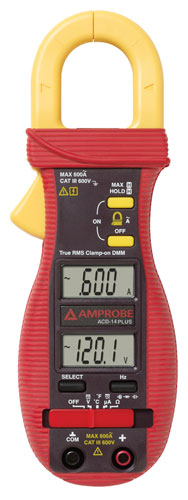
Originally Posted by
Marty Tippin

Lights alone pull around 10 amps - 9 fixtures, 4 x 4' T8 bulbs per fixture. The heat pump compressor is 3 ton (a little big for a 40x40 shop but it's what I could find...) There are no resistive heating elements, just the compressor and the blower motor.
Resistive loads like an oven are a bit different than a motor, aren't they? Amps is amps, I know, but the motor on average won't draw near it's "full load" rating while the elements in an oven are at full-bore all the time.
And as has been discussed, the full-load rating of this DC is "only" 22 amps; Grizzly apparently specified a 30A breaker some time ago for the same DC but then upped their spec to 40A - the speculation is that they got too many complaints of tripping on startup.
Good advice. I'll certainly try to gather some more information. Not sure how to measure the startup loads on the various machines though unless my cheap clamp-on ammeter will pick up the spike during the first second or two after power on.
Thanks for the additional info. I always err on the safe side when giving advice online. There are too many unknowns when you can't be there to test, measure and assess in person.
There are a lot of little signs I picked up over the years that I could never teach through words. But what I do know is a well designed electrical system rarely fails and rarely causes other electrical loads to break down. I've seen a perfectly good appliance fail because it was "deprived" by another load. The homeowner was not happy with their former electrician.
As for your ammeter being able to pick up the start-up spike, you might be able to see it if you have someone watching it while someone else turns the machine on. It may not be perfectly accurate but maybe you can use whatever it does as a ballpark. The objective is to at least have a reasonable idea what is happening and when and why. That way, if you are ripping some 12/4 hard maple and something goes wrong, you won't just reset the breaker or shrug your shoulders when the neighbors storm your house with torches for causing the power grid to go down. 
“Travel is fatal to prejudice, bigotry, and narrow-mindedness..." - Mark Twain






 Reply With Quote
Reply With Quote





 Thanks, David.
Thanks, David. )
)